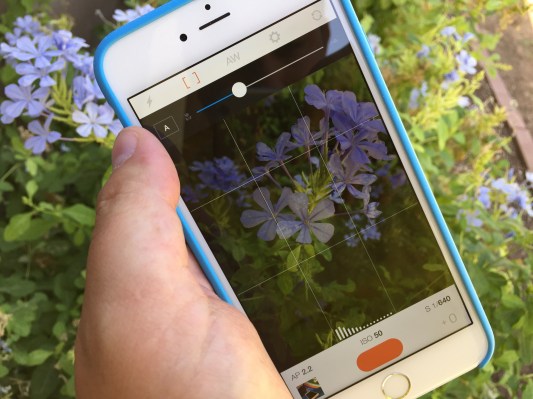“Finally” is a funny word, especially when it comes to Apple. I try to avoid using it because I’m cognizant of the fact that Apple’s pacing is often a lot different than the hive mind’s idea of what it should be.
Just see how long it took to implement third-party keyboards in a way that was satisfactory security-wise for an example.
But, as the iPhone long-ago crossed the rubicon of becoming the most popular camera in the world, I think Apple has taken its extra sweet time in allowing developers — and by extension, users — access to more control over the camera that’s always with them.
iOS 8 does just that, opening up tons of controls over focus, shutter speed, manual white balance and gray card support, ISO (“film” speed), exposure compensation and more. Developers can build truly powerful, flexible photography apps for the iPhone…finally.
As photography used to be my profession, I’ve always kept up with the major apps and choices out there. Most folks I spoke to over the years gave the impression that developing a photo app for the iPhone was something of a black art. The genre was full of “hacks,” tricks, false starts and banishments, and everything had to be done by feel, as Apple didn’t provide direct, official access to manual controls.
The salt in the wound was that competing operating systems like Android and Windows Phone actually enabled more flexibility and complex photography far sooner than iOS.
I’m really, really happy that Apple now does, after all these years. I’ve gotten a lot of crap over telling people that I was a former pro photographer that had long since moved to an iPhone as my primary (read: most used) camera. I’ve never implied that the iPhone could best an SLR for quality and I wouldn’t shoot a wedding on an iPhone (yet) for a lot of reasons.
But the iPhone has done more to make great photography — in the plebian sense — than almost any camera in history.
I think you can put it right there with the Kodak Brownie, the Pentax K-1000 and the Canon Digital Rebel for releases that had the most effect on the democratization of photography. Yes, there were many other “pioneer” devices, but a select few have brought the ease and joy of quality photography within reach of millions or billions. The iPhone is one of those devices.
I used to sell cameras for a living, which I enjoyed a lot. When digital hit the wide consumer market — pretty much a year or two after I began — there was a massive surge in understanding that came along with it. Having the display right there for people to chimp may have evoked derision in some photographers (and I still think it’s a weakness of many pros born into digital, but that’s another story), but it also allowed people, for the first time, to see the effects of the changes they made in aperture, shutter speed and the like.
It wasn’t just that you could see the pictures instantly, it was that they gave you true feedback, creating a loop that contributed to greater understanding and improvement.
Now, the iPhone has that ability as well, and I’m really happy about it. If you’re looking to experience what I’m talking about then I’m sure your favorite camera replacement app like Camera+ or VSCOcam will be updated to add them soon. Currently, I’m really enjoying Manual, by William Wilkinson, which provides a serene, useful manual experience for the iPhone.
There could be some argument that apps like Manual — or the equivalent apps for Android or Windows Phone — are “for experts only,” but I disagree. Instead, they’re for the curious, those interested in taking better pictures and all “phone photographers.”
Which is pretty much all of us, when you think about it.
Header image of Manual for iPhone shot with Manual for iPhone.
